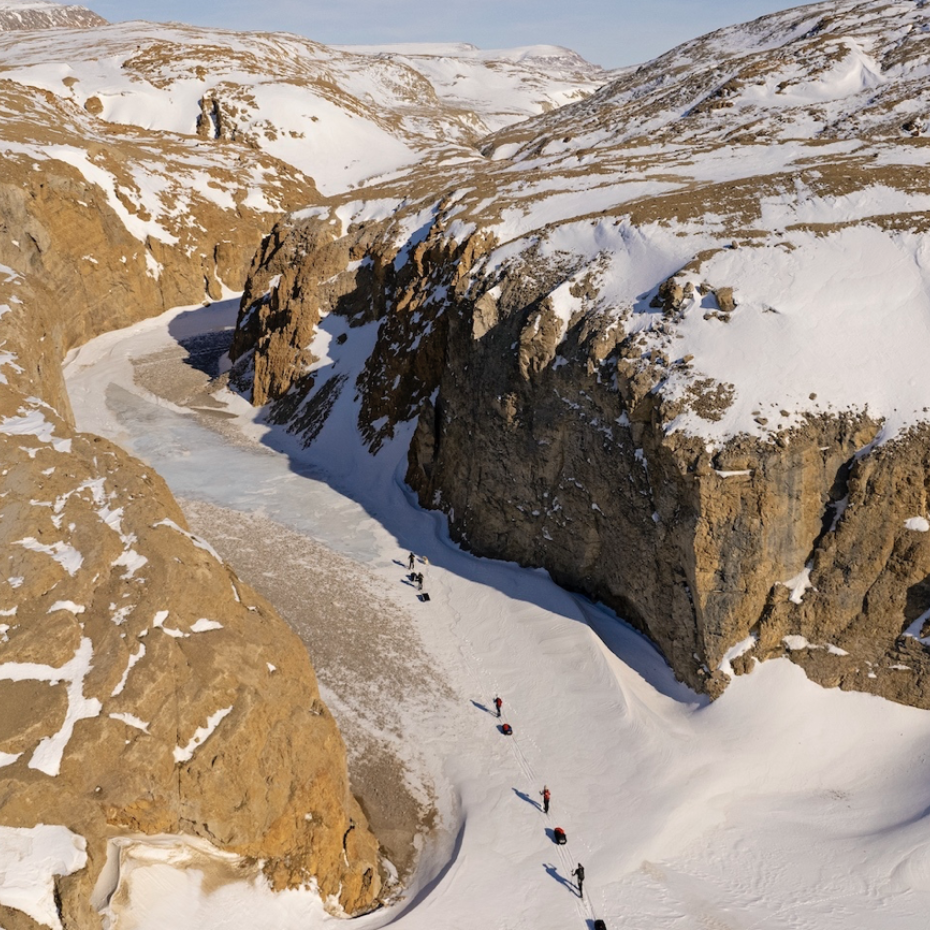
June 10, 2022 | Ellesmere Island, Nunavut, Canada
SVERDRUP PASS SKI EXPEDITION
When asked by an adventurous client to name the coolest place to ski, Richard Weber said there was only one trip he’d done twice: Sverdrup Pass, on Ellesmere Island.
At 79°N, this pass, which connects Ellesmere’s deeply fjorded west and east coasts, offers the chance to encounter interesting wildlife, scenery, and history during a 200km ski trek that, while challenging, doesn’t require making peace with sustained misery. “You’ve got to be a decent skier and enjoy the outdoors and camping, but it’s not skiing to the North Pole,” said Nansen Weber, who led the trip for five guests this past spring.
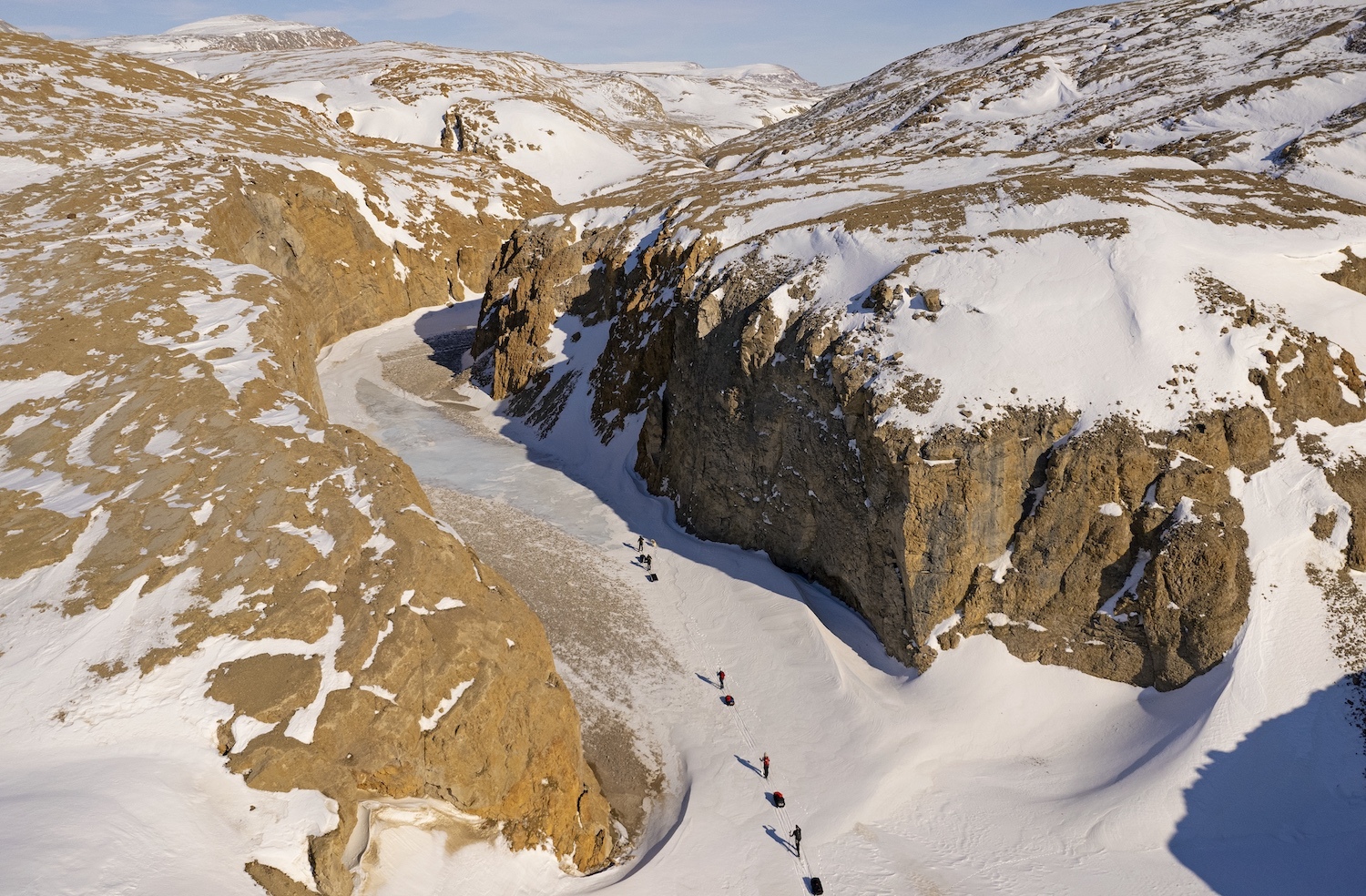
The group set out on May 1 for what was planned as a 14-day trip. Unfortunately, in an unusual twist of meteorological fate, the weather was good in Resolute but bad on Ellesmere, and they found themselves delayed for four days. Making the best of the situation, they camped on the ice near Resolute in order to give their gear a good shakedown. “That way on days when it’s actually windy you know what you’re doing,” Nansen said.
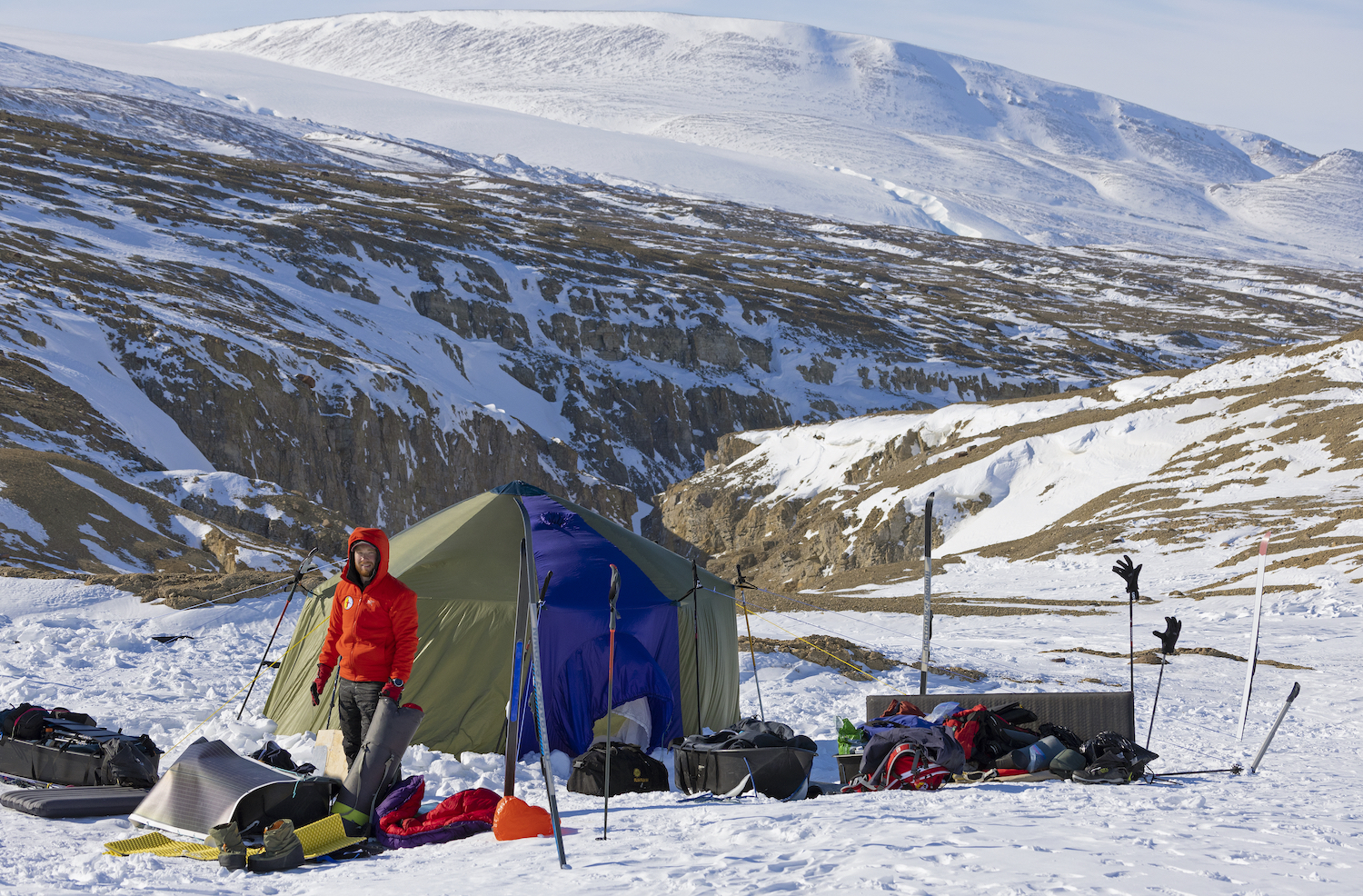
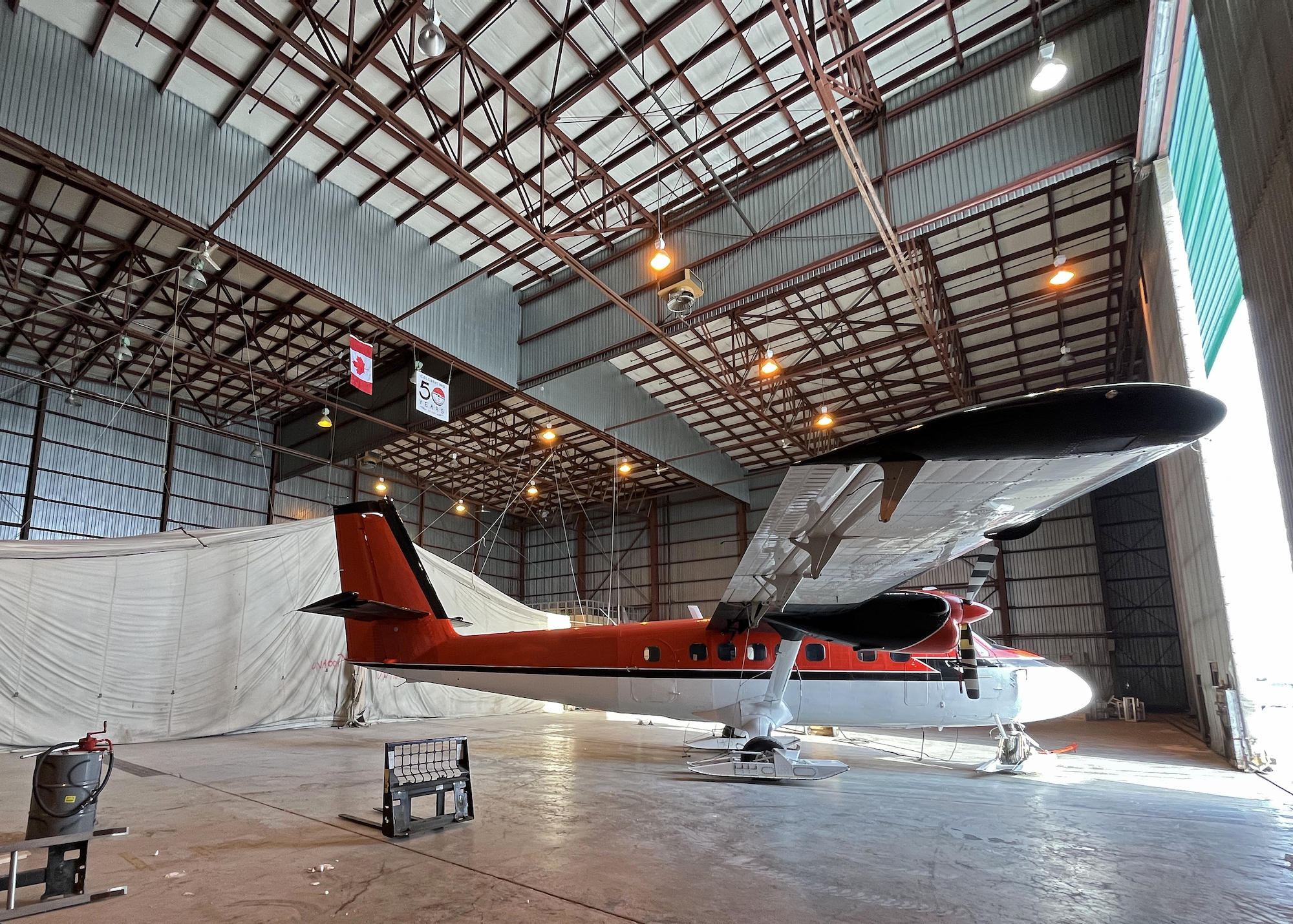
Finally, a ski-equipped Twin Otter took the group north. It was a two and a half hour flight to their landing site at Irene Bay, on Ellesmere’s west coast, but because of a bad crosswind, they ended up landing 10km further west (and further from the pass) than planned. “We just had to ski a little way longer,” Nansen said. “That’s the way it goes.” Because they’d left Resolute dressed to ski and with sleds packed, the group started moving as soon as they were off the plane, heading east. Within a kilometer, they’d spotted their first polar bear tracks, which, Nansen said, came as no surprise. “There’s no hunting pressure there. Lots of seals, lots of bears. So it was to be expected.”
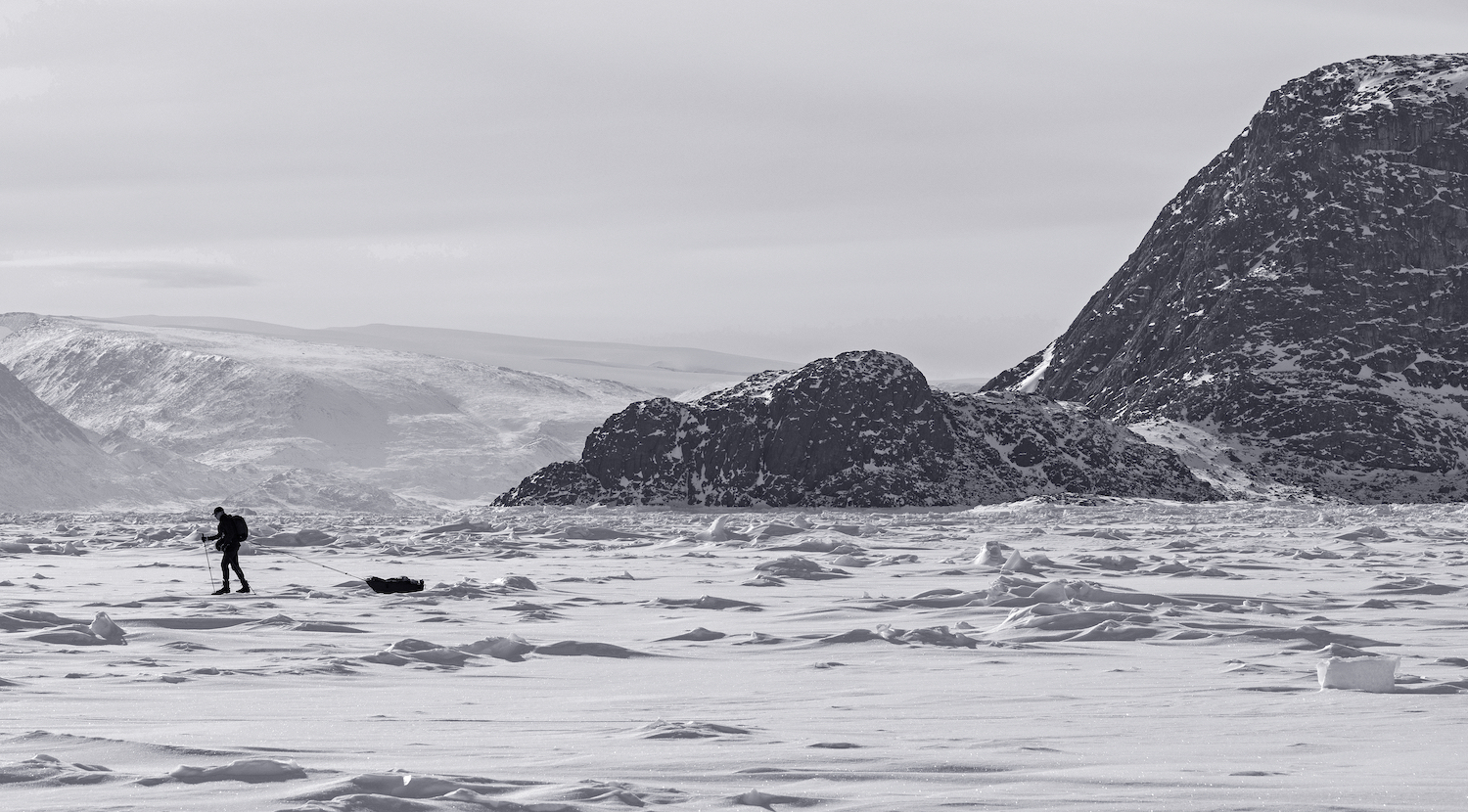
With sleds at their maximum weight (100-150lbs) and a strong headwind working against them, the group made a modest 15km the first afternoon. They were also adjusting to the temperature, which averaged around -8 but reached as low as -17 at night and as high as 10 on sunny days. “Some days I skied half the day without a shirt on—the sun is so strong,” Nansen said.
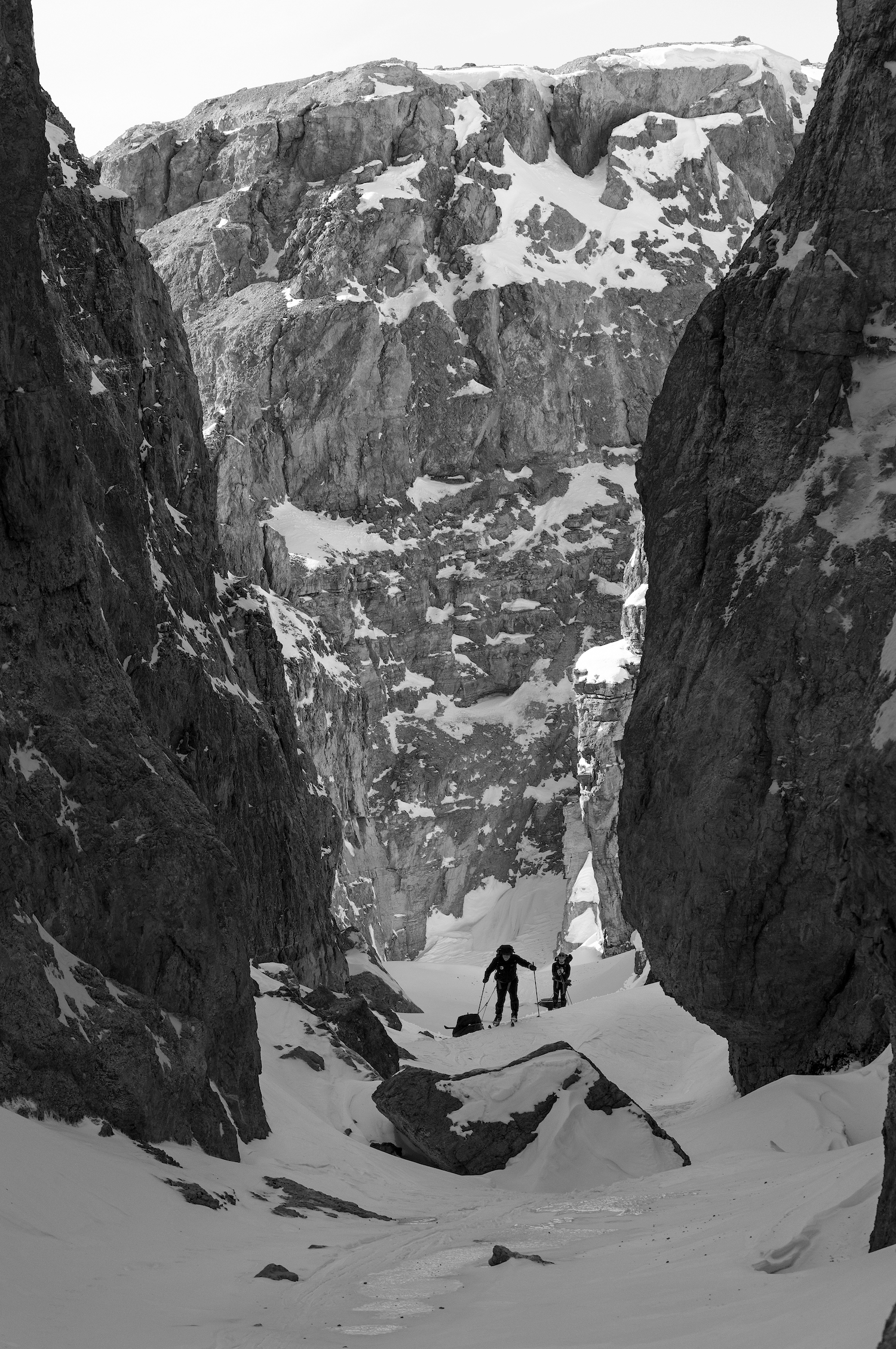
The first four days were spent traversing Sverdrup Pass and encountering a wide variety of landscapes: open riverbeds and looming glaciers and nice big mountains, their sedimentary layers showing through the snow. Occasional sections were so windblown they had to take their skis off and walk. On the third day, they came to a canyon full of drifted snow that got narrower and narrower as they went. “By the end, you could touch both sides with your hands. We couldn’t even get sleds through,” Nansen said. “Imagine the canyons at Arctic Watch and then put 30-40 feet of snow in there.” Wolves, foxes, and polar bears had left abundant tracks. “The most convenient way to get across the island is this pass,” Nansen said. “The wildlife knows. You can just follow the animal tracks.”
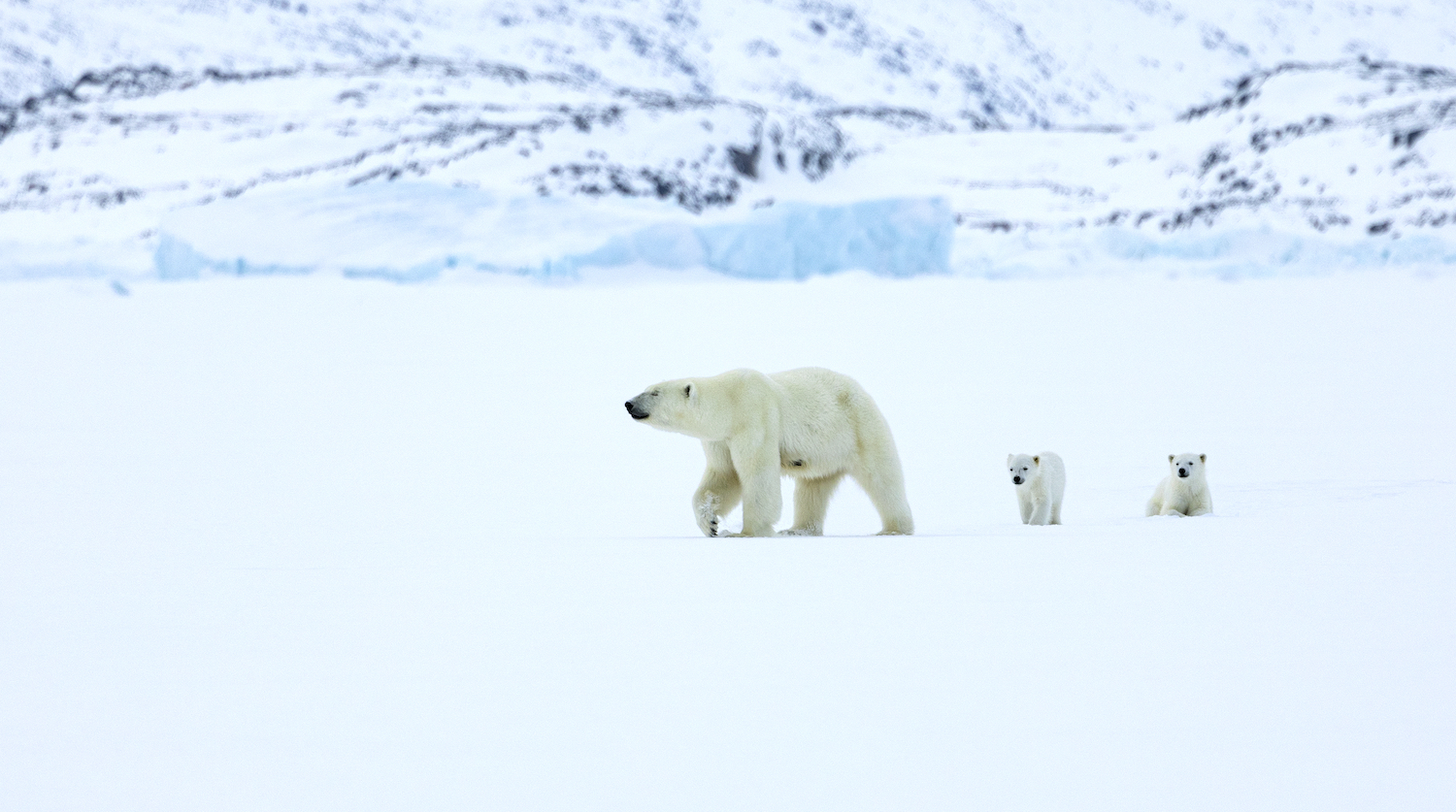
Days on Ellesmere started around seven. There was coffee and hot cereal and the necessary chore of melting snow for the day’s water. Then they’d ski for two hours before stopping for a lunch of dried sausage and fruit, nuts, and hot Gatorade. After another hour and a half of skiing, they’d take a break, and after one last hour and a half-long session, they’d set up camp, deal with any equipment problems, and crawl into the tent to make dinner. Fortunately, these skiers were the beneficiaries of Josée Weber’s thirty years’ experience refining a polar diet for Richard, her sons, and herself. They ate freeze dried versions of food Nansen would happily eat at home: spaghetti, or African peanut stew, for example. Duck paté or canned oysters might make an appearance as hors d’oeuvres, and of course there was the traditional Weber cocktail of whiskey, maple syrup, and powdered milk. Once refueled, everyone would hit the hay before getting up to do it all over again.
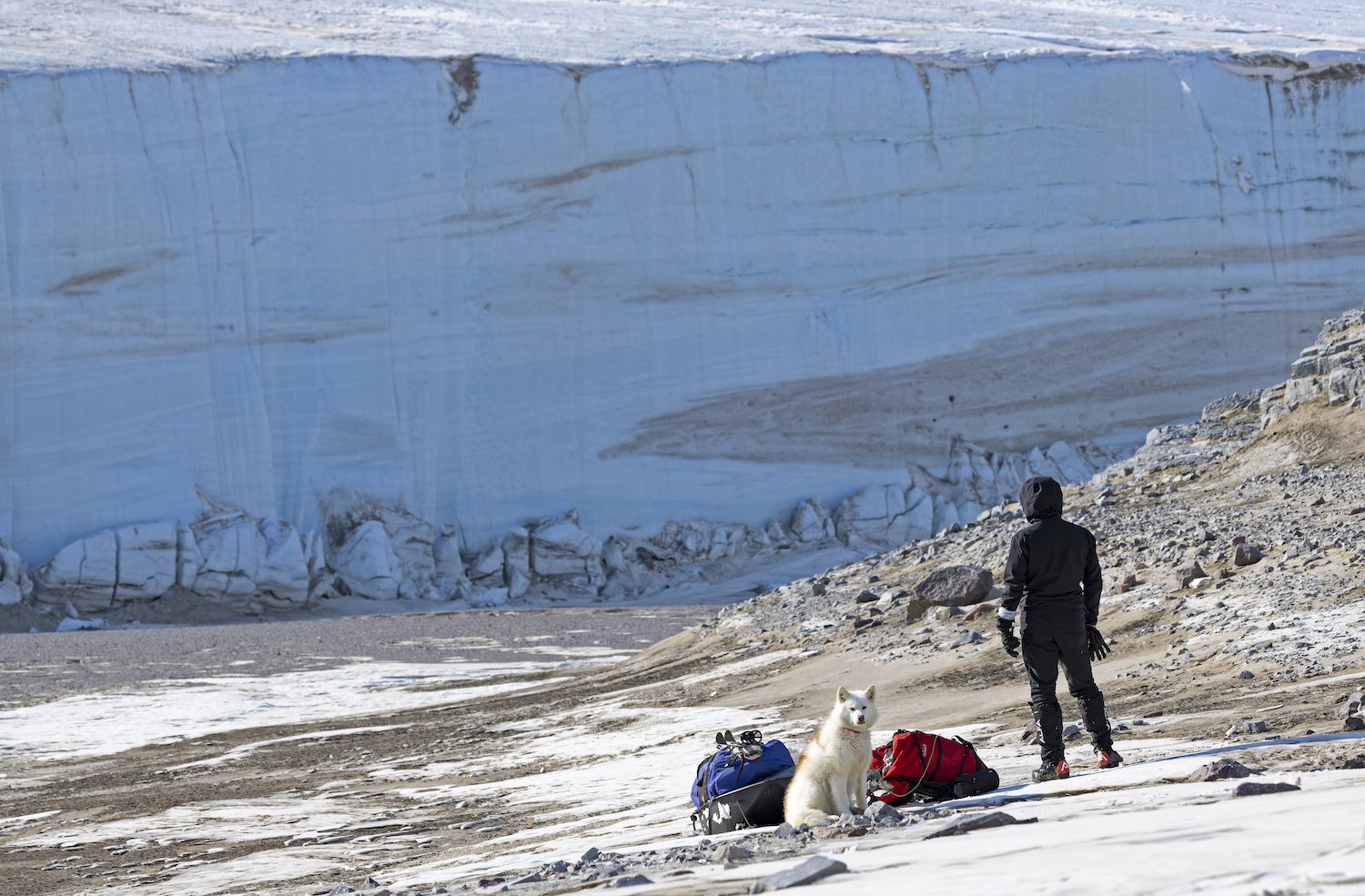
When the group emerged from the narrow, snow-clogged canyon, they were on the downhill. This side was lusher than the more windblown western slope, and they could see the tops of grass sticking out of the snow and lots of muskox tracks. One member of the group spotted Arctic wolves while answering a midnight call of nature, and bear tracks were everywhere. “One day we probably saw seventy sets of bear tracks,” Nansen said.
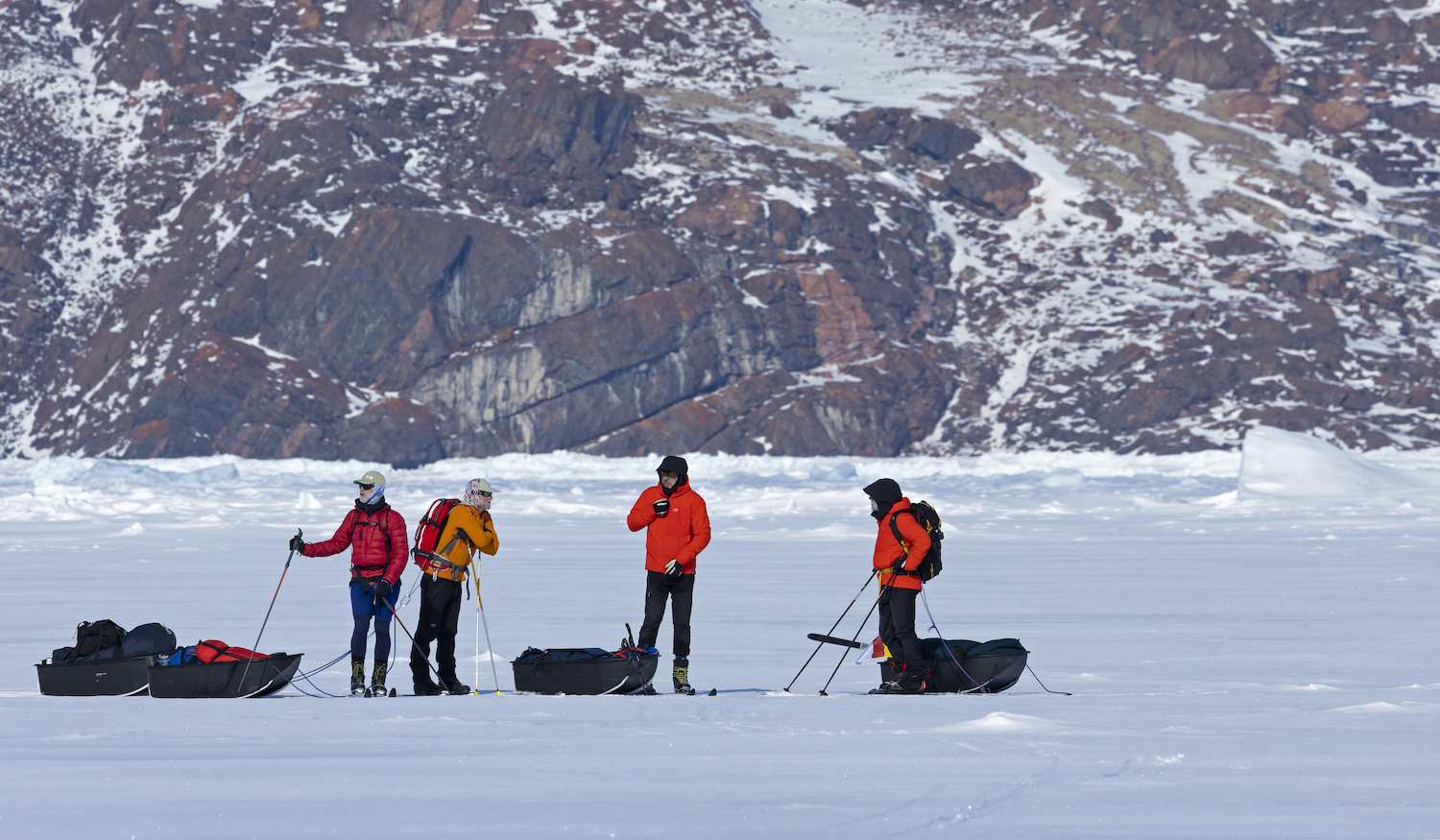
On the seventh day, a bear paid a visit to camp at 10:00pm, just as Nansen was about to doze off. “Uh, Nansen,” said one of the guests, who’d heard telltale snuffling. “There’s a bear outside the tent.” When he looked out, Nansen was confronted by a big, healthy, nine-foot bear. Although the bear was doing just fine on seal meat and not terrifically interested in the camp, he could not be allowed to linger. After Nansen shouted and fired shotgun rounds in the air, the bear ambled about two kilometers away and lay down on an iceberg. After a couple hours’ rest and a roll in the snow, the bear went on his way. The next day, they spotted a mother with a cub, and not long after that, another mother with two newborn cubs. “You could see the cubs hadn’t been walking around that much,” Nansen said. “The mother had to slow her pace, and the cubs were figuring out the whole rough ice thing.” Entranced, the skiers sat quietly on their sleds and watched the animals until they wandered off into the ice.
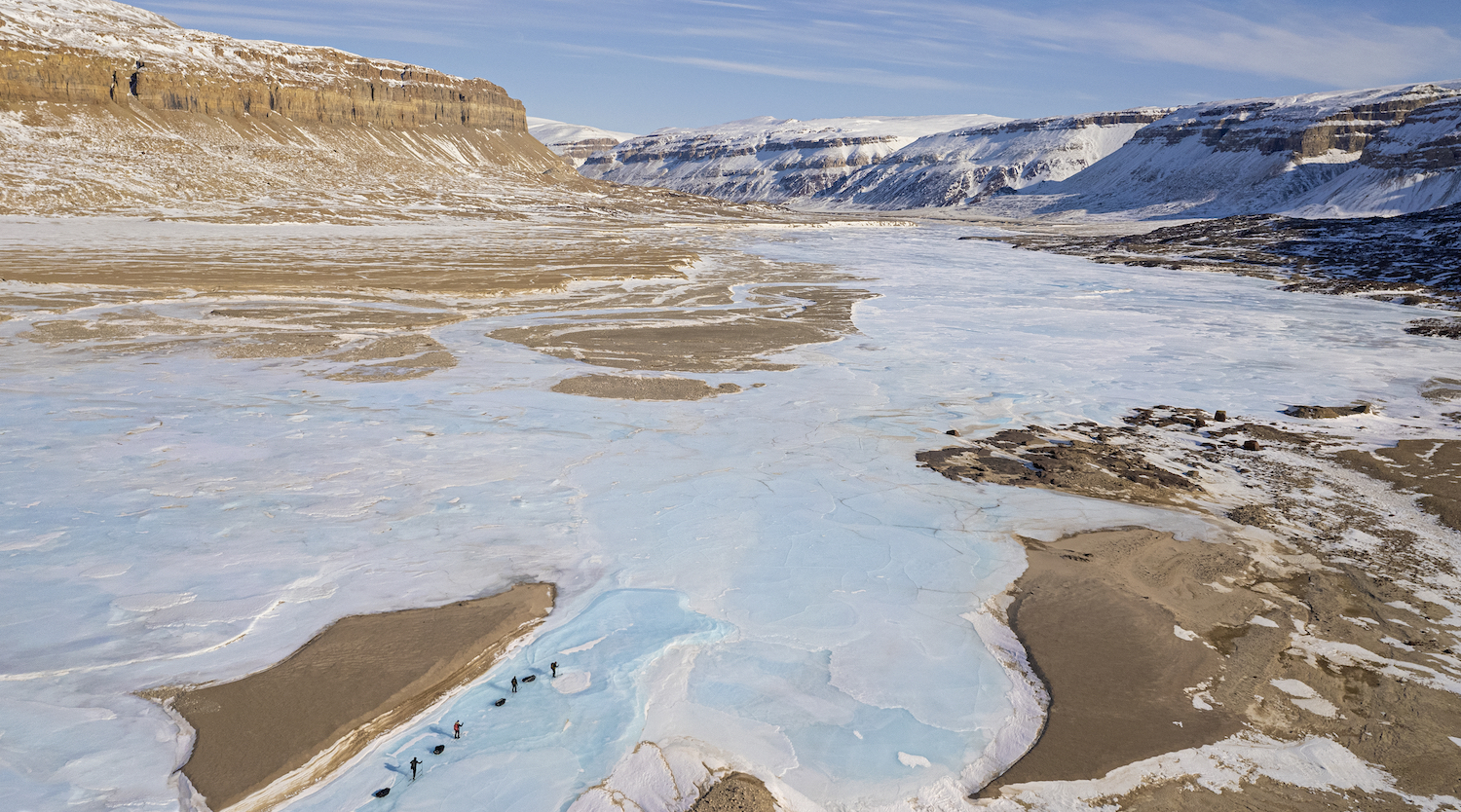
One day, the group found themselves skiing down a massive frozen river, the ice scoured bare by the wind. The surface was so smooth that, at times, all they had to do was stand on their skis and let the wind push them along, their sleds blowing up alongside them. There were frozen rapids, and spots where they skied between boulders. Eventually, the group got spit out onto a big fjord walled in by granite cliffs. The skiing down fifty-kilometer-long Flagler Bay was beautiful. Prime. They made 25km per day.
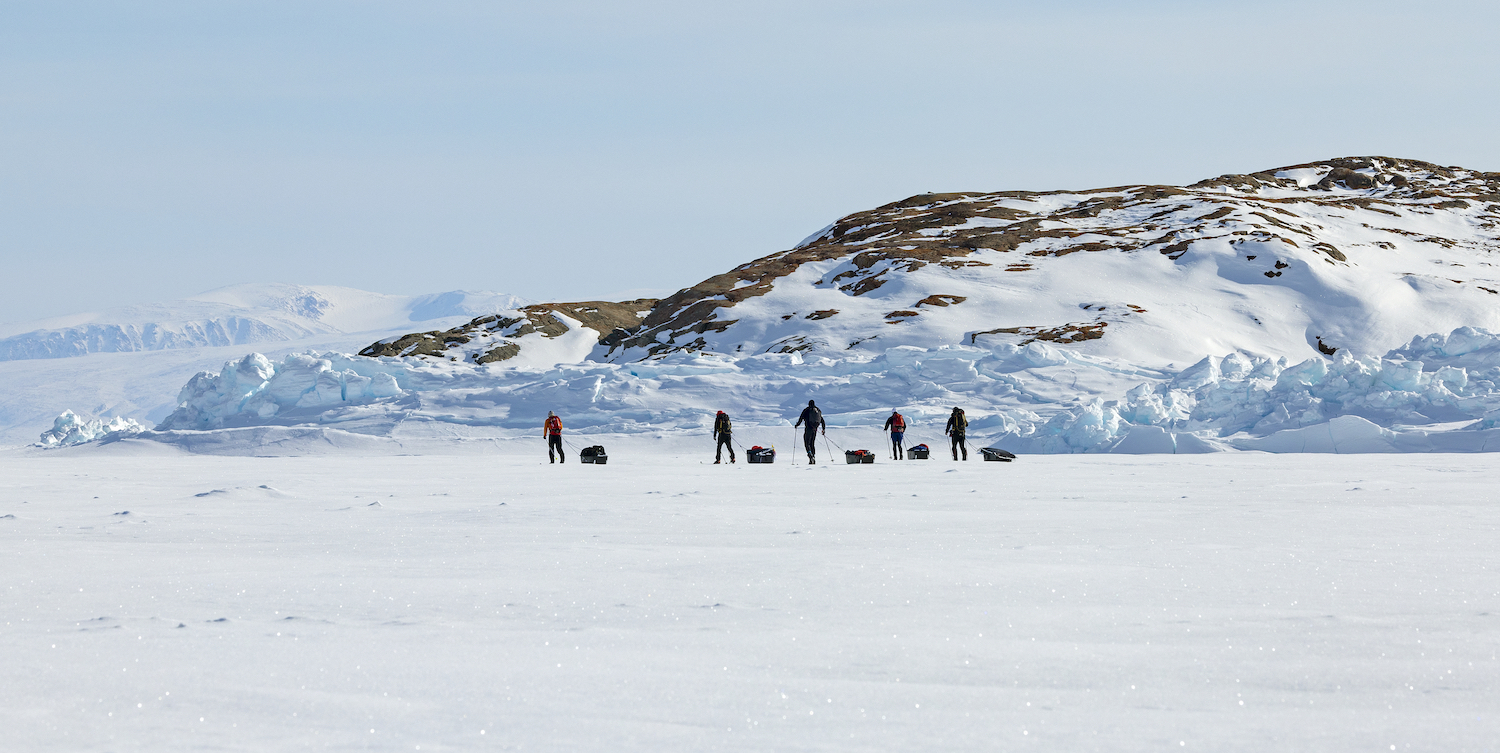
Although they had hoped to ski all the way to Pim Island, the initial weather delay meant they finished in Alexandra Fjord, camping for two nights near an old RCMP post from the 1950s and visiting the Thule sites on Skraeling Island as a day excursion. “It’s gorgeous,” Nansen said about their last campsite. “Huge glaciers, perfect sunshine. Cool old classic cabins with white paint and blue trim. Wolf tracks and polar bears cruising by.” He spent the last evening sitting in t-shirt listening to birds chirping and observing the first seagulls. “It’s cool to see spring coming on and the wildlife showing up. Another week and there wouldn’t have been enough snow to ski through.”
For Nansen and the five guests, it was a case of perfect timing.
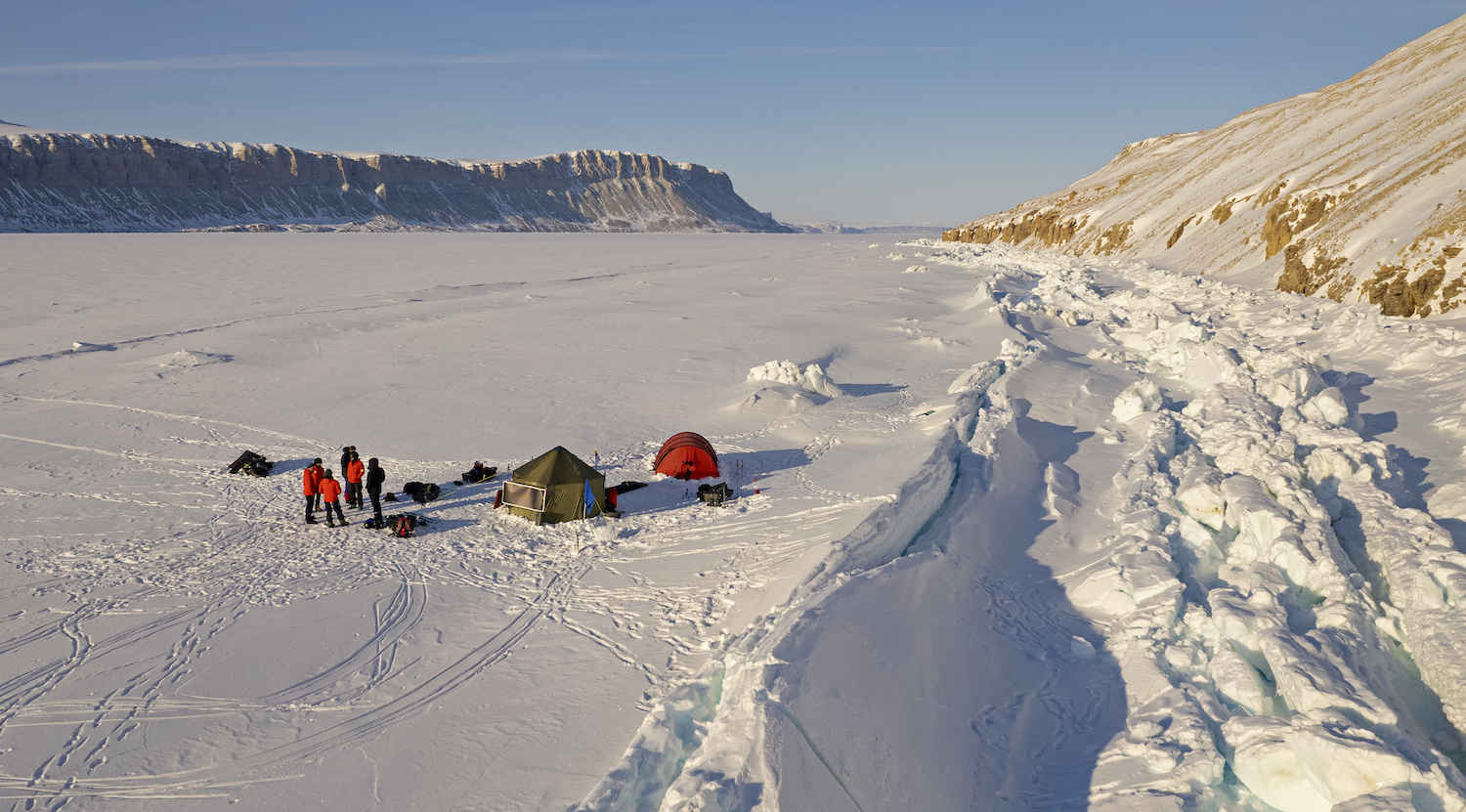
We're here to help.
We understand that booking a trip like this is a big endeavour. Please reach out to us with any questions that you might have regarding your upcoming adventure.



